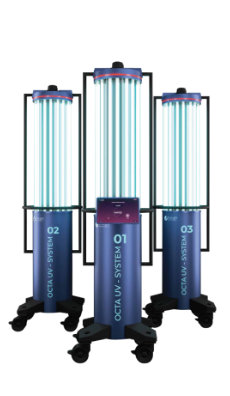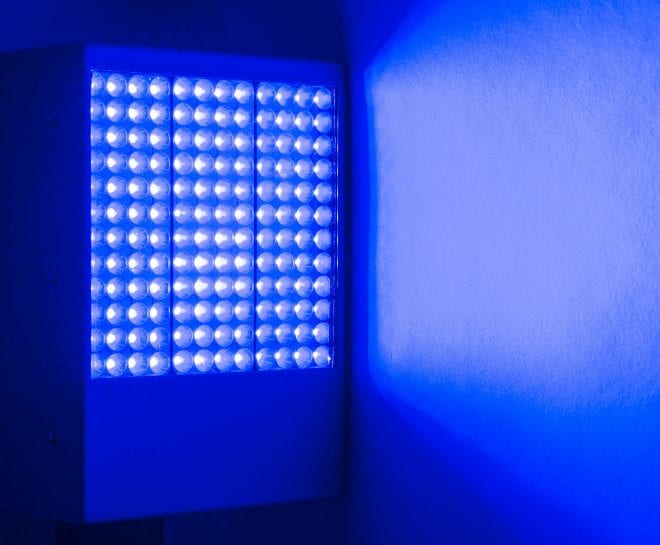Future-Proofing Your Area: Integrating UV Surface Disinfection for Ongoing Security
Revealing the Advantages of UV Sanitation: Making Certain Disinfected and tidy Spaces
While traditional cleaning techniques have long been relied upon, innovations in technology have actually presented an innovative solution that guarantees clean and sterilized spaces: UV disinfection. In addition, we will dive right into the safety factors to consider that should be taken right into account when applying UV disinfection. Prepare to uncover a new measurement of tidiness and uncover the untapped potential of UV sanitation.

The Scientific Research Behind UV Sanitation
UV disinfection is a scientifically proven approach that makes use of ultraviolet light to get rid of unsafe microbes from surface areas and water. The scientific research behind UV disinfection hinges on the capacity of UV-C light to harm the DNA and RNA of microorganisms, making them incapable to recreate and triggering their eventual fatality. UV-C light falls within the wavelength series of 200 to 280 nanometers, which is extremely efficient in destroying microorganisms, viruses, and other pathogens.
When subjected to UV-C light, the genetic material of microorganisms takes in the power from the light, leading to the development of thymine dimers. These dimers interrupt the regular replication and transcription procedures of the microorganisms, inhibiting their capacity to reproduce and endure (uv surface disinfection). The DNA and RNA damage brought on by UV-C light is deadly to the microbes, making UV disinfection a effective and reputable approach for eliminating a vast array of virus
UV sanitation is especially helpful in settings where standard chemical disinfectants may be inefficient or not practical. It is a non-chemical method that does not leave any deposits or dangerous spin-offs, making it risk-free for usage in food processing, medical care facilities, water therapy plants, and numerous other industries. Moreover, UV sanitation is environmentally friendly, as it does not add to the development of antibiotic-resistant germs or various other unsafe toxins.
Effectiveness of UV Disinfection on Microorganisms
The effectiveness of UV disinfection in removing microorganisms has been thoroughly studied and shown in various scientific researches. UV radiation has the capability to inactivate a large range of bacteria, consisting of germs, fungi, and viruses, by harming their DNA or RNA. This stops them from replicating and triggering infections.
One research published in the American Journal of Infection Control found that UV disinfection was effective in minimizing the presence of multiple drug-resistant bacteria in hospital rooms. One more research conducted by the National Institute for Occupational Safety and security and Wellness demonstrated that UV sanitation was able to remove 99.9% of the flu infection on surface areas.
UV sanitation has likewise revealed promise in combating the spread of healthcare-associated infections (HAIs) According to a research study released in The Lancet, using UV-C light in enhancement to standard cleansing methods substantially minimized the incidence of HAIs in a healthcare facility setting.
Furthermore, UV sanitation has shown to be efficient versus arising virus, such as the severe intense respiratory system syndrome coronavirus 2 (SARS-CoV-2), which causes COVID-19. A research performed by the National Emerging Contagious Illness Laboratories showed that UV-C light can inactivate the virus on surface areas within seconds.
Applications of UV Sanitation in Different Setups
With its proven efficiency in eliminating virus, UV sanitation has discovered applications in a variety of settings. One of one of the most common locations where UV disinfection is utilized remains in healthcare facilities. UV modern technology is utilized to decontaminate person rooms, running spaces, and other high-touch surface areas, minimizing the risk of healthcare-associated infections. In addition, UV disinfection is also being executed in food handling plants and dining establishments to guarantee the safety of foodstuff and protect against the spread of foodborne illnesses. UV disinfection is likewise helpful in water treatment plants, where it is made use of to kill dangerous bacteria and give secure drinking water.
Another important application of UV disinfection impends filtration industry. UV air purifiers are used in residential, commercial, and commercial setups to eliminate air-borne microorganisms, infections, and mold spores. This technology is particularly useful in settings where individuals are Visit Your URL a lot more at risk to breathing infections, such as health centers, schools, and office structures.
Moreover, UV disinfection is significantly being utilized in public transport systems, such as buses and trains, to keep tidy and disinfected rooms for travelers. UV light is employed to sanitize surfaces and air inside the lorries, reducing the threat of spreading out transmittable illness.
Advantages of UV Sanitation Over Standard Techniques
In comparison to standard methods, UV disinfection supplies a variety of unique benefits that make it a more suitable option in numerous markets and settings. One significant benefit is its effectiveness versus a broad selection of microorganisms, including fungis, infections, and microorganisms. Unlike chemical disinfectants that might have restricted efficacy versus certain pathogens, UV disinfection is a non-selective process that can eliminate or over at this website suspend a wide spectrum of hazardous microorganisms.
An additional benefit of UV sanitation is its ability to give efficient and fast disinfection. Conventional sanitation methods commonly need longer get in touch with times or several actions to attain the preferred level of sanitation. On the other hand, UV light can give continual and immediate disinfection, decreasing downtime and boosting productivity in various applications.
UV disinfection additionally offers a ecologically friendly and safe choice to standard disinfection methods. uv surface disinfection. Unlike chemical agents, UV light does not leave any type of dangerous deposits or by-products, making it appropriate for usage in sensitive settings such as food handling centers, healthcare setups, and water therapy plants
Moreover, UV disinfection is an economical solution in the long run. While the in advance financial investment for UV disinfection systems might be higher than conventional techniques, the functional prices are usually lower. UV lights have a lengthy life-span and require minimal upkeep, leading to lowered labor and substitute prices.
Security Considerations for UV Sanitation
Considering the possible hazards linked with UV sanitation, it is vital to resolve the safety and security factors to consider associated with executing this technology. UV disinfection uses ultraviolet light to eliminate or suspend microbes, making it an efficient technique for sanitizing numerous surfaces and items. However, it is necessary to understand that UV radiation can additionally pose risks to human health if proper precaution are not followed.
Primarily, straight exposure to UV radiation can create harm to the skin and directory eyes. Extended direct exposure can lead to sunburn, skin damages, and even an increased danger of developing skin cancer. It is crucial to make sure that UV disinfection systems are appropriately confined and equipped with safety and security functions such as automated shut-off systems or activity sensing units to stop unintended direct exposure.

Moreover, correct training and education and learning are crucial for those responsible for operating UV sanitation systems. They must recognize the prospective threats, understand the security protocols, and know how to deal with and preserve the equipment correctly.
Conclusion
Finally, UV disinfection offers many benefits in guaranteeing tidy and sanitized rooms. Its effectiveness in removing pathogens has actually been shown with clinical study. UV sanitation can be used in various setups, including healthcare centers, food handling plants, and water treatment systems. Contrasted to standard techniques, UV sanitation has benefits such as faster sanitation times, marginal chemical use, and no damaging results. Safety considerations need to be taken into consideration to avoid prospective risks related to UV direct exposure.
UV sanitation is a scientifically tested technique that uses ultraviolet light to get rid of damaging bacteria from surfaces and water. The DNA and RNA damages triggered by UV-C light is lethal to the microorganisms, making UV disinfection a efficient and reputable technique for killing a wide range of microorganisms.
An additional advantage of UV sanitation is its capacity to offer rapid and efficient sanitation. UV sanitation makes use of ultraviolet light to kill or inactivate microorganisms, making it an efficient approach for sanitizing various surface areas and things. Compared to typical methods, UV sanitation has benefits such as faster sanitation times, marginal chemical use, and no hazardous byproducts.